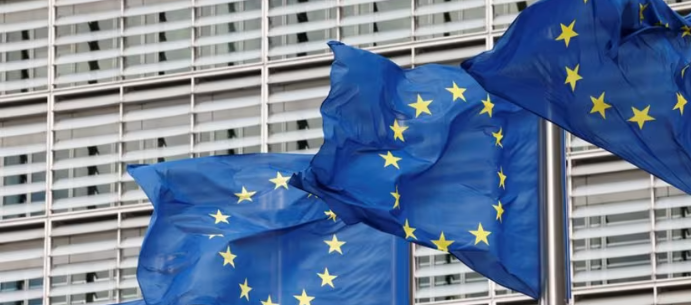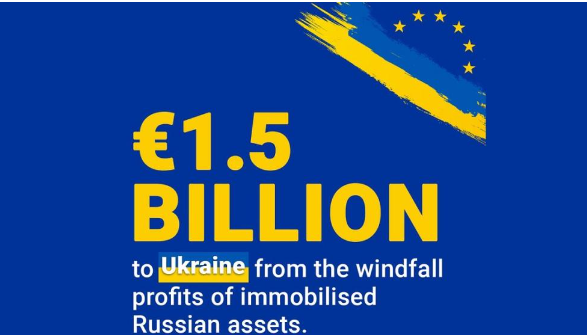Russian Assets to Ukraine A Strategic Move in the Geopolitical Chess Game:-
Russian Assets to Ukraine In a bold and unprecedented move, the European Union has transferred €1.5 billion, raised from frozen Russian assets, to Ukraine. This financial aid marks a significant moment in the ongoing conflict between Ukraine and Russia, showcasing the EU’s commitment to supporting Ukraine in its struggle for sovereignty and economic stability. This article explores the intricacies of the financial transfer, its implications for the geopolitical landscape, and the reactions from key stakeholders involved.
Background: The Russia-Ukraine Conflict
The conflict between Russia and Ukraine, which escalated in 2014 with the annexation of Crimea by Russia and intensified with the 2022 invasion of Ukraine, has led to severe economic, political, and humanitarian crises. The international community, led by the EU and the United States, has imposed a series of sanctions on Russia, aiming to weaken its economic ability to sustain the war effort and to signal strong opposition to its actions.
As part of these sanctions, billions of euros in Russian assets have been frozen by the EU. These assets, ranging from real estate and financial holdings to luxury goods, belong to Russian oligarchs, companies, and the government. The decision to transfer funds raised from these assets to Ukraine is a strategic measure to support Ukraine’s economy and war effort while maintaining pressure on Russia.  for more information click on this link
for more information click on this link
The Financial Transfer: Mechanisms and Details
The €1.5 billion transferred to Ukraine was raised through a combination of asset sales, fines, and other financial mechanisms implemented by the EU. The European Commission played a central role in coordinating the efforts across member states to ensure the assets were identified, frozen, and subsequently liquidated or leveraged to generate the necessary funds.
The Russian Assets to Ukraine funds will be disbursed to Ukraine in tranches, with the first installment already transferred and subsequent payments scheduled over the next few months. The financial aid is intended to support various sectors, including military defense, infrastructure rebuilding, and humanitarian relief.
Breakdown of Fund Allocation
- Military Support: A significant portion of the funds will be allocated to enhancing Ukraine’s defense capabilities. This includes purchasing military equipment, training for Ukrainian forces, and other logistical support necessary for the ongoing conflict.
- Infrastructure Rebuilding: The war has caused extensive damage to Ukraine’s infrastructure, including roads, bridges, hospitals, and schools. Part of the funds will be directed towards rebuilding these essential facilities to restore normalcy and support economic recovery.
- Humanitarian Aid: The conflict has displaced millions of Ukrainians, creating a dire need for humanitarian assistance. The funds will be used to provide food, medical supplies, housing, and other critical services to those affected by the war.
- Economic Stabilization: The war has severely impacted Ukraine’s economy, leading to inflation, unemployment, and a decline in GDP. Financial aid will also support economic stabilization measures, such as subsidies for key industries, small business support, and initiatives to attract foreign investment.
Implications for the Geopolitical Landscape
The EU’s decision to transfer funds raised from Russian assets to Ukraine is a significant geopolitical maneuver with far-reaching implications.
Strengthening EU-Ukraine Relations
This financial aid underscores the Russian Assets to Ukraine unwavering support for Ukraine. It strengthens the bond between the EU and Ukraine, fostering closer political, economic, and military cooperation. This move is likely to enhance Ukraine’s prospects for future EU membership, a goal that has been a cornerstone of Ukraine’s foreign policy since the early 2000s.  for more information click on this link
for more information click on this link
Increasing Pressure on Russia
By redirecting funds from Russian assets to Ukraine, the EU is sending a strong message to Moscow: the international community will continue to support Ukraine and counter Russian aggression. This move is expected to increase the economic pressure on Russia, potentially weakening its ability to sustain the war effort and prompting reconsideration of its current strategies.
Setting a Precedent
The Russian Assets to Ukraine transfer of funds from frozen assets to support a nation under attack sets a new precedent in international relations. It demonstrates the potential for international sanctions to not only punish aggressors but also directly aid victims. This could influence future global responses to conflicts and acts of aggression, promoting a more proactive and supportive stance towards nations facing similar threats.
Reactions from Key Stakeholders
Ukrainian Government
The Ukrainian government has welcomed the EU’s decision with open arms. President Volodymyr Zelensky expressed profound gratitude, stating, “This financial aid is a lifeline for our country. It will significantly bolster our defense capabilities, aid in rebuilding our infrastructure, and provide much-needed relief to our citizens. We are deeply thankful to the EU for standing with us in our time of need.”  for more information click on this link
for more information click on this link
European Union
EU leaders have lauded the move as a testament to the Union’s commitment to supporting Ukraine. European Commission President Ursula von der Leyen remarked, “This transfer is a clear signal that the EU stands firmly with Ukraine. We will continue to use all available means to support Ukraine’s fight for sovereignty and to hold Russia accountable for its actions.”
Russian Government
Predictably, the Russian Assets to Ukraine government has condemned the EU’s decision, labeling it as an act of economic warfare. In a statement, the Russian Foreign Ministry declared, “The EU’s actions are a blatant violation of international law. By seizing and redistributing our assets, the EU is engaging in outright theft and exacerbating the conflict. We will respond to this provocation appropriately.”
International Community
The international community’s reaction has been mixed. Western allies, including the United States and the United Kingdom, have expressed support for the EU’s decision. U.S. Secretary of State Antony Blinken stated, “We commend the EU for its decisive action. Supporting Ukraine is crucial for maintaining international peace and security.”
Conversely, some countries, particularly those with closer ties to Russia, have criticized the move. They argue that the seizure and redistribution of assets could set a dangerous precedent, potentially leading to similar actions against other nations in future conflicts.
Conclusion: A Strategic Move in a Complex Conflict
The EU’s transfer of €1.5 billion from Russian assets to Ukraine represents a significant and strategic intervention in the ongoing conflict. It highlights the EU’s commitment to supporting Ukraine and maintaining pressure on Russia, while also setting a new precedent for international sanctions and aid.
As the conflict continues, this financial aid will play a crucial role in bolstering Ukraine’s defense, rebuilding its infrastructure, and providing humanitarian relief. The move is likely to have far-reaching implications for the geopolitical landscape, influencing future international responses to acts of aggression and conflict.
In the complex and ever-evolving geopolitical chess game, the EU’s decision is a bold move that underscores the importance of solidarity, support, and strategic action in the face of aggression and conflict. As Ukraine continues its fight for sovereignty and stability, the international community will undoubtedly watch closely, with the hope that such decisive actions will contribute to a resolution and lasting peace. ALSO READ:-Climate Protests Over 100 Flights Cancelled in Germany Due to 2024




